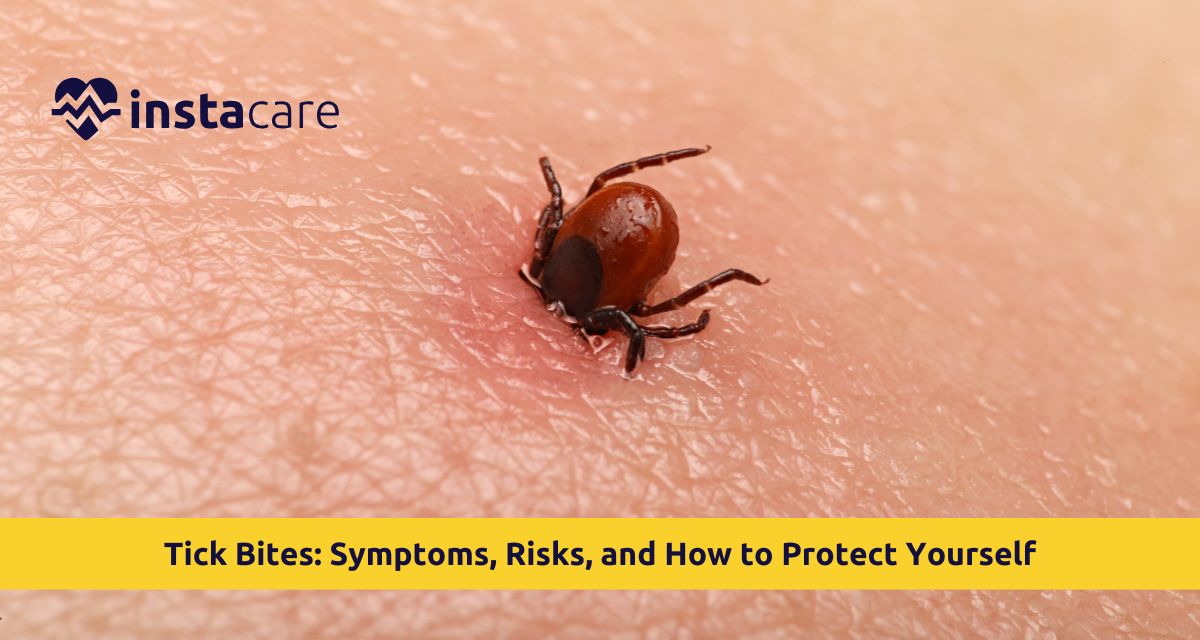What are Ticks and How Do they Bite?
Symptoms of Tick Bites
Immediate Symptoms:
- Redness or itching where bite has occurred
- Small red papule where bite occurred
- Tick bite swelling where tick bite occurred
Tick Bite Rash Patterns:
- Bull's-eye rash: Round tick bite rash with transparent center, typical of tick bite Lyme disease, 3-30 days following the bite
- Red, spreading rash: Any rash that spreads is medially assessed
- Multiple rashes: Rashes distant from the area of the bite are highly suggestive of systemic infection
Systemic Symptoms (days to weeks after the bite):
- Fever and chills
- Headache and weakness
- Muscle and joint aching
- Swollen lymph nodes
Tick bite vs mosquito bite:
- Tick bites typically have a darker visible lesion (the tick) in the center if attached
- Tick bites are not as pruritic on first bite as mosquito bites
- Tick swelling is local
- Mosquito bites can be felt immediately, but tick bites cannot be felt for days or even hours
Health Risks Associated with Tick Bites
- Lyme Disease: Most common tick-borne disease, tick bite Lyme disease is caused by an infected black-legged tick. Its symptoms and signs are bull's-eye rash, fever, fatigue, and joint pain. It causes arthritis, neurologic sequelae, and cardiac sequelae in the absence of treatment.
- Rocky Mountain Spotted Fever: Typically fatal illness, with headache, fever, rashes with spots, and immediate antibiotic treatment.
- Anaplasmosis and Ehrlichiosis: Bacterial infection with potential to produce flu-like illness potentially fatal in immunocompromised host.
- Babesiosis: Parasitic red blood cell disease with extremely high mortality in splenectomized individuals or compromised immune status.
- Powassan Virus: Fatal but rare viral illness with ability to cause inflammation of the brain without cure.
- Alpha-gal Syndrome: Two tick bites cause an allergy against red meat that triggers hives, queasy stomach, and potentially fatal anaphylaxis.
How Do You Remove a Tick Safely?
What You'll Need:
- Fine-point tweezers or tick remover
- Rubbing alcohol or antiseptic wipes
- Sealed container (where to put the tick in order to test it)
Removal Steps:
- Wash your hands with soap and water
- Pinch the tick as near to the skin surface as possible with fine-tip tweezers
- Pull straight up using firm steady pressure without jerking or twisting
- Remove all mouthparts
- Wash bite area and hands thoroughly
- Submerge tick in a small vial of rubbing alcohol
- Watch for infection or rash at bite area within a few weeks
What NOT to Do:
- Do not apply petroleum jelly, nail polish, or heat—these enhance the chance of disease transmission
- Do not twist or jerk the tick
- Do not squeeze the tick between your hand
Read More: What You Must Know About Bed Bug Bites Treatment And Prevention
Prevention Tips: How to Protect Yourself from Tick Bites
Personal Protection:
- Wear clothing: Long-sleeved shirts, long pants and socks, and closed shoes. Ticks are readily visible when dressed in light-colored garments.
- Apply repellents: Spray EPA-registered insect repellents with DEET (20-30%), picaridin, or oil of lemon eucalyptus. Treating clothes with permethrin.
- Stay on the trail: Walk in the center of the path, not in grass and brush where ticks are waiting to surprise you.
- Avoid holiday weekends: Ticks are active from April to September, most active during spring.
Post-Outdoor Activity:
- Do body tick checks: Check all of your body, particularly scalp, behind ears, armpit, groin, and behind knees.
- Check pets: Check animals in very good detail, particularly tick bites on the dog.
- Shower on time: Shower within two hours to kill loose ticks.
- Drying clothes tumbling: Dry clothes on hot dryer for 10 minutes to kill other ticks.
Environmental Control:
- Mowing yards and leaf litter removal
- Building barriers on yards and woods
- Woodpiles stacked in open, sunny areas away from the home
When to see a doctor for tick bites:
- Any rash following a tick bite
- Fever several weeks after a tick bite
- Flu-like syndrome after woods or other infesting tick areas
- Headache or arthralgia that is persistent
- The tick was worn for more than 24 hours
- Infection signs at the bite site
Conclusion

